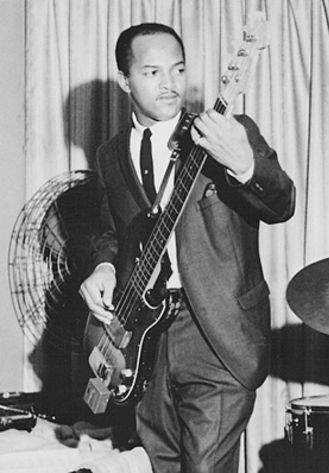I’m a beginner @wrxloaf but my attitude is if it works and doesn’t cause me pain then it’s ok.
I’ve settled on the movable anchor as it takes care of the muting. YMMV.
Josh said it all in this statement:
“THE RIGHT TECHNIQUE IS THE ONE THAT GETS YOU THE MUSICAL RESULTS YOU NEED”
Are you doubting The Godfather

The great man was self-taught, unique, crazy-talented and inventive.
As such, he followed a learning path similar to all the legendary blues and jazz pioneers before him: exploration, discovery, improvisation, innovation, mastery.
I can’t believe no one has made any “planted thumb” jokes yet. What’s the matter with you people? For the record I have no planted thumb jokes but if we can have a slice of pizza playing the accordion …
Thanks for that, man.
I knew someone, somewhere would have something.
Thanks! 
I had been holding off from the obvious but after being extended an invitation it would have been rude not to.

I agree with your thinks on this. I don’t know why it works for me. Possibly Because I’ve never played anything else. Had no idea how to do it and lucked into the best possible training for it. Because @JoshFossgreen keeps the fun in fundamentals.
Yes to this!
The technique that is healthy and good for your body and brings musical results is the right one. And then you can experiment and modify from there and add all the chords/taps/slaps/whatevers.
So long as it is healthy and comfortable and doesn’t impede the music!
There are 3 main anchoring techniques: fixed anchor, movable anchor, floating thumb.
Fixed anchor is good if you have big hands, you can just lock your thumb in place on the pup and not worry about moving it but it doesn’t allow you to take advantage of muting with the thumb, requiring more attention to left hand muting and your hand changes angle more as you move between strings.
Movable anchor lets you take advantage of muting with the thumb, gives you the same thumpy tone from rest strokes as fixed anchor but requires more practice to move your thumb between strings/pup. It’s more consistent in hand angle but some may find it awkward moving between the pup and strings.
Floating thumb is great for muting 5 and 6 string and can allow you to move more quickly between strings. It’s great for fast plucking and free strokes (see Gary Willis) but may not give you as thumpy a tone as rest strokes with fixed and movable anchor. Some may find it awkward with where to position the thumb when playing the lowest string.
I play mostly movable anchor but will use floating thumb on my 5 string when it’s useful for muting or when I’m using free strokes. When choosing a technique, I think it’s useful to pick one which provides the best benefits and not just the one that’s easiest or “that’s what my thumb just likes to do”. One should also be able to pluck the strings anywhere from the bridge to up over the fret/fingerboard in order to get a variety of tones. Plucking with the thumb while palm muting is also a good technique to know when you want some upright bass tones ![]()
Everything is awkward when it’s new and you’re not used to it. ![]()
Yeah, I would mostly say just go with whichever feels best to you for given situations. None are really better than the others, they all have pros and cons.
I like the way Gio puts it:


